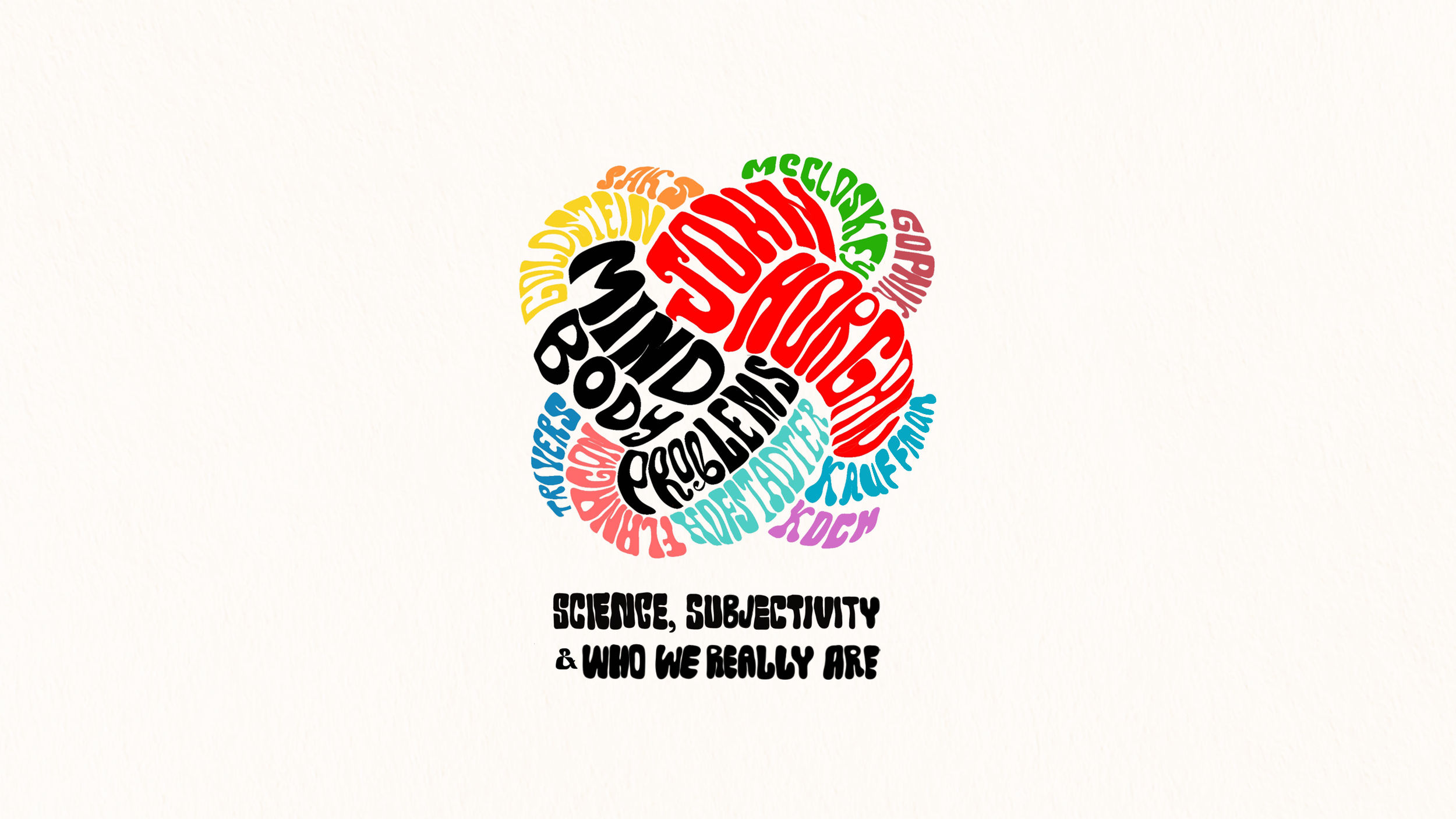
About Mind-Body Problems
The mind-body problem is a life-long obsession that writing has failed to relieve. My previous four books, even The End of War, which concludes with a defense of free will, all touch on the mind-body problem. I won’t say more here about why I wrote Mind-Body Problems, since I do that in Introduction: The Weirdness, but I’d like to explain why I published it on this website.
I wrote my first three books with the help of an agent, who found a publisher to give me money in advance. My agent and I parted ways about a decade ago, but I managed to persuade a publisher to give me a tiny advance for The End of War. After I got the idea for Mind-Body Problems in 2015, I pitched it to a few agents and editors and got chilly responses. Fuck ‘em, I thought, and wrote the damn book anyway. I could afford that attitude because teaching pays the bills. Before Stevens Institute of Technology hired me in 2005, I had been a freelance writer for eight years, and supporting my family was tough. I enjoy writing much more now that I don’t rely on it for a living.
As I finished Mind-Body Problems, I considered looking for a publisher again, but I dreaded that ordeal. The more I thought about self-publishing online, the more the freedom of it appealed to me. I could write the book as I chose. I could add art (including the knot and other chapter-heading images created by artist/writer Nikita Petrov), links, photos, audio from interviews. I could tack footnotes onto the ends of chapters, including some an editor might find too digressive.[1]
I could get the book out fast and make it free. My priority is being read, and provoking a discussion about ideas that matter to me. If you’re reading this on a narrow screen, you’ll find the table of contents below the small knot icon beneath this note. That icon, which also follows each chapter, brings you back to this homepage. If you prefer e-readers, you can buy an abridged version of Mind-Body Problems, with no art or embedded links, on Amazon for $5. A paperback edition, which includes notes and a groovy new cover knot designed by Nikita Petrov, costs $15.
While working on this book, I posted lots of mind-body musings on “Cross-Check,” my Scientific American blog. Some of that writing ended up here, as did fragments from other works, but Mind-Body Problems consists almost entirely of original material. Send complaints, corrections, critiques to me at horganism3@gmail.com, and let me know if you want your remarks posted in DISCUSSION. Who knows, instead of me changing your mind about the mind-body problem, you might change mine.
Notes
[1] When I’m working on a book, no matter what I’m doing—flying to Indiana to visit Douglas Hofstadter, say, or sitting on my couch writing this very passage–thoughts pop into my head, which I sometimes jot down. I have added some of these notes to the narrative in the hope that readers might like them. I also want to convey how my mind and, I’m guessing, most minds work. We like to think our lives have a plot, a story line, but it can be tough distinguishing story from digression, signal from noise. Our minds compound the problem, because they keep veering off on tangents, jumping from one topic to another based on tenuous and even absurd connections, as in the word salad of a madman. We usually circle back to the main narrative, but maybe we don’t, maybe the tangent has become the tale, or maybe there is no tale, there are only tangents. Buddhists deride our cognitive jumpiness as “monkey mind” and recommend techniques for taming it, but maybe letting the monkey run free is another path to enlightenment. Or maybe I’m just saying that because I have no choice.
Table of Contents
INTRODUCTION
The Weirdness
CHAPTER ONE
The Neuroscientist: Beyond the Brain
CHAPTER TWO
The Cognitive Scientist: Strange Loops All the Way Down
CHAPTER THREE
The Child Psychologist: The Hedgehog in the Garden
CHAPTER FOUR
The Complexologist: Tragedy and Telepathy
CHAPTER FIVE
The Freudian Lawyer: The Meaning of Madness
CHAPTER SIX
The Philosopher: Bullet Proof
CHAPTER SEVEN
The Novelist: Gladsadness
CHAPTER EIGHT
The Evolutionary Biologist: He-Town
CHAPTER NINE
The Economist: A Pretty Good Utopia
WRAP-UP
So What?


